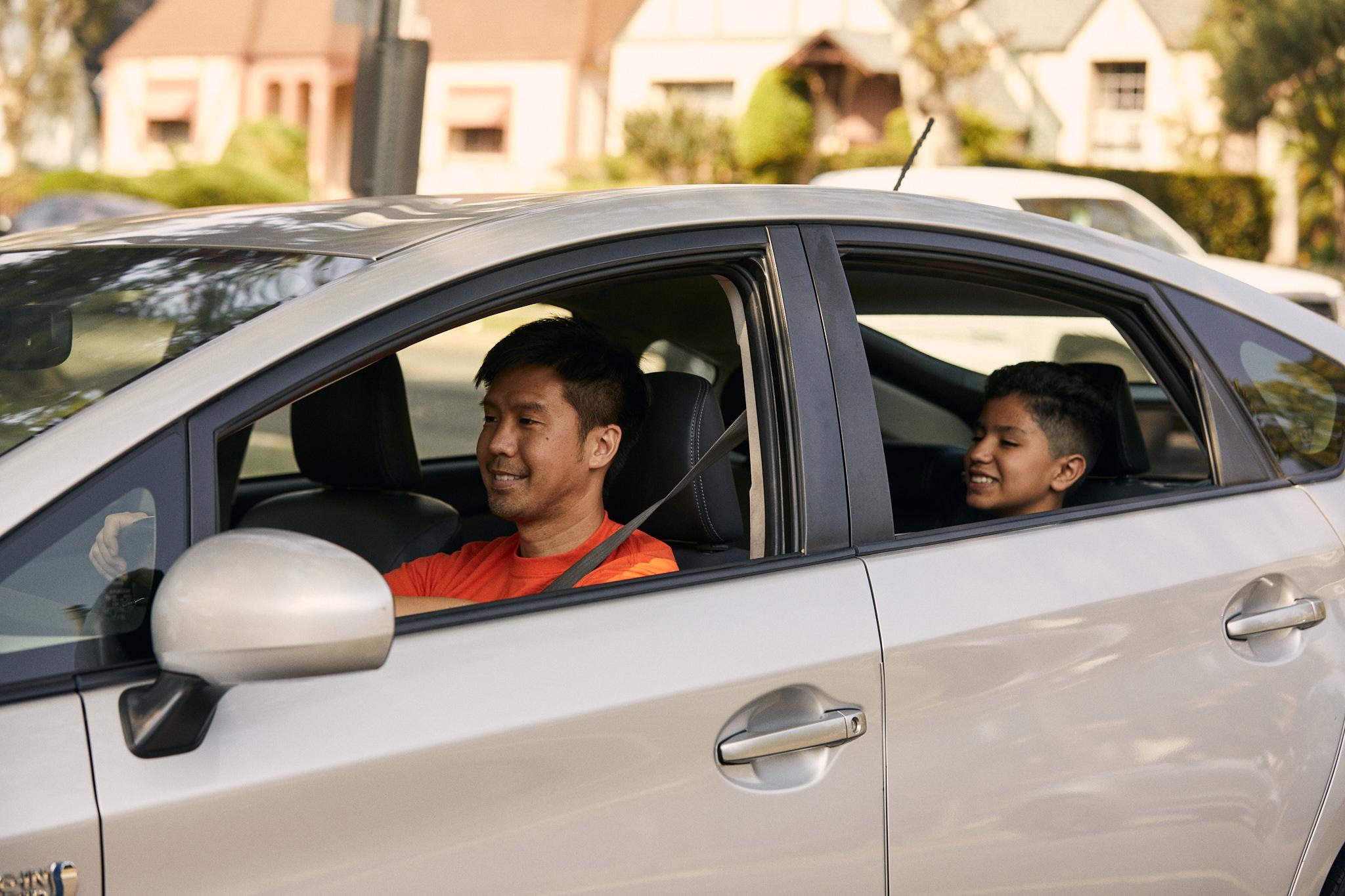The connection between reliable student transportation and consistent school attendance is undeniable, especially for the most vulnerable learners. This critical link was brought into sharp focus during a recent webinar we did with School Transportation News, “How Detroit Public Schools Improved Attendance with Multimodal Transportation,” which featured Aaron Walter, Executive Director of Transportation at Detroit Public Schools Community District, and Joseph Brumfield, Vice President of Business Development at HopSkipDrive.
Their insightful discussion shed light on the profound challenges faced by urban school districts in the wake of the pandemic, and explored how a student-centric approach to transportation can directly impact attendance rates.
This blog post summarizes the main insights from the webinar, offering valuable lessons for districts striving to overcome transportation barriers and combat chronic absenteeism. (To get the full details on DPSCD’s multimodal approach to transportation and partnership with HopSkipDrive, you can watch the full webinar here.)
Key Webinar Insights
Our recent webinar highlighted how Detroit Public Schools Community District (DPSCD), which serves a large and diverse student population, successfully navigated unprecedented transportation challenges by adopting a flexible, multimodal strategy. The district’s experience, which is outlined below, provides a compelling case study for other school districts seeking to enhance transportation services and foster a more equitable learning environment.
Chronic Absenteeism Rates Climbed After the Pandemic
DPSCD faced a transportation crisis that would have overwhelmed most districts. They lost over 100 bus drivers during the pandemic while serving 48,500 students across a city where 78% of families live in poverty. But instead of cutting services, they built something better.
Before COVID-19, DPSCD had been making progress on chronic absenteeism. When students returned to in-person learning, the situation worsened dramatically.
“Coming out of the pandemic, we were at an all-time high,” Walter said, noting that chronic absenteeism rates reached 76% during the 2021–2022 school year. Students experiencing homelessness, living in foster care, and those with disabilities faced the greatest barriers to consistent school attendance.
The district now reports attendance rates hovering around 57% to 58% — a substantial improvement representing thousands of students attending school more consistently.
New Student Transportation Solutions Are Needed
Although Walter initially had reservations about alternative transportation approaches, he adapted DPSCD’s transportation strategy to include tactical partnerships after losing approximately 25% of his bus driver workforce. At that point, it became abundantly clear the district needed new solutions that could respond to each student’s circumstances with flexibility.
Brumfield — who has extensive education experience, including founding a charter school — emphasized how a strategic partnership between districts and Transportation Network Companies like HopSkipDrive creates possibilities that traditional systems can’t match.
Multiple Transportation Options Serve Different Student Needs
DPSCD implemented a comprehensive multimodal transportation system designed to address the diverse and often complex needs of its student population. Moving beyond a one-size-fits-all system, this approach recognizes that factors such as housing stability, medical conditions, route density, and individual student capabilities necessitate a flexible and adaptable strategy.
The district’s transportation framework includes several key components, each tailored to specific student demographics and logistical requirements:
Yellow buses for students with stable housing and traditional route compatibility
10-passenger vans for routes with fewer students
Gas card reimbursements for families who can provide their own transportation
Public transit passes for students who can navigate the system independently
HopSkipDrive rides for students with unstable housing, medical needs, or individualized circumstances
The district now works with a number of different vendors, with HopSkipDrive providing hundreds of daily rides for students whose circumstances require personalized solutions. Building a resilient system that integrates different modes of transport means every student will have access to school regardless of their situation.
Flexible Ride Scheduling Helps Highly Mobile Students Stay in School
Walter reports that the district’s department serving students experiencing homelessness expanded from two employees to seven during the pandemic. HopSkipDrive’s platform gives the department the flexibility to nimbly respond to these students’ dynamic needs.
“If a student gets identified today, we have the ability to put a kid on the HopSkipDrive platform at 10:00 or 11:00 o’clock tonight, and get that student to school the very next day.”
—Aaron Walter, Executive Director of Transportation at Detroit Public Schools Community District
This rapid response capability prevents attendance gaps when students face housing instability. HopSkipDrive’s RideIQ platform lets district staff modify addresses and routes instantly when a student’s living situation changes. Parents are also kept in the loop through text notifications about ride confirmations, CareDriver arrivals, and safe school drop-offs.
Technology Reduces Operational Burden While Improving Communication
Before implementing technology-powered transportation options, parents would frequently call DPSCD with questions about ride timing and schedule changes. HopSkipDrive’s Safe Ride Technology™ — which enables open communication, visibility into who the CareDriver is, and real-time ride tracking for everyone involved in a student’s journey — has reduced these calls substantially.
HopSkipDrive’s platform also offers other features designed to support district needs, including efforts to decrease chronic absenteeism. The Daily Absent Rider Email, for example, flags consecutive student absences for districts, which helps identify students who may have moved or who may need additional support.
Expanded Services Support Comprehensive Student Development and Well-Being
DPSCD has strategically leveraged HopSkipDrive to extend its impact far beyond basic home-to-school transportation. This expanded partnership addresses critical needs and removes transportation barriers that could otherwise hinder academic and personal growth.
Thanks to HopSkipDrive, students experiencing homelessness who qualify for McKinney-Vento transportation receive vital rides home after sports practices and school events, ensuring they can participate fully in extracurricular activities and benefit from the stability and community these programs offer.
DPSCD is also using HopSkipDrive to transport high school students engaged in dual enrollment programs. By making sure these students have reliable transportation to community college classes, the district is empowering them to pursue advanced academic opportunities and get a head start on their higher education journeys.
The district also utilizes HopSkipDrive for crucial medical appointments at school health hubs so students can easily access essential services like dental cleanings and eye exams.
HopSkipDrive acts as a critical partner in DPSCD’s commitment to supporting every student’s success, both at school and beyond the classroom.
A Model for a Successful Student-Centered Transportation System
When districts match solutions to individual circumstances rather than applying one-size-fits-all approaches, they can serve vulnerable populations more effectively while actually expanding services. The key lies in recognizing that transportation barriers can directly prevent school access for students who need it most.
Says Walter: “Without HopSkipDrive, we would be hard pressed to figure out how to get kids to school right now.”
DPSCD’s multimodal approach to student transportation — and the results that show it’s working — provides a framework for all districts experiencing driver shortages, budget pressures, and increasing numbers of students with complex transportation needs.
Interested in exploring how a partnership with HopSkipDrive can work for your district?



